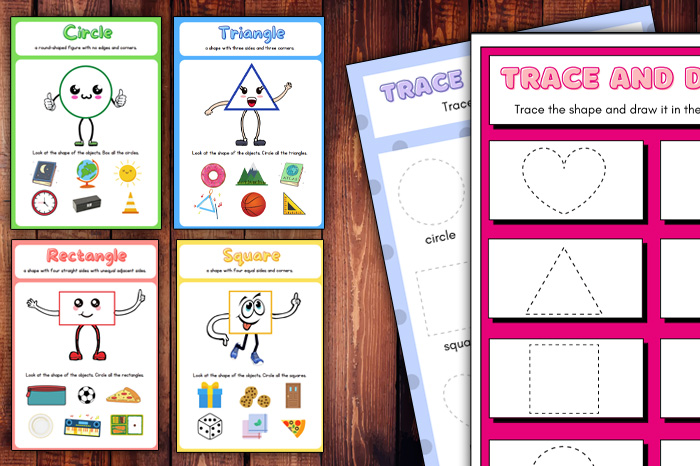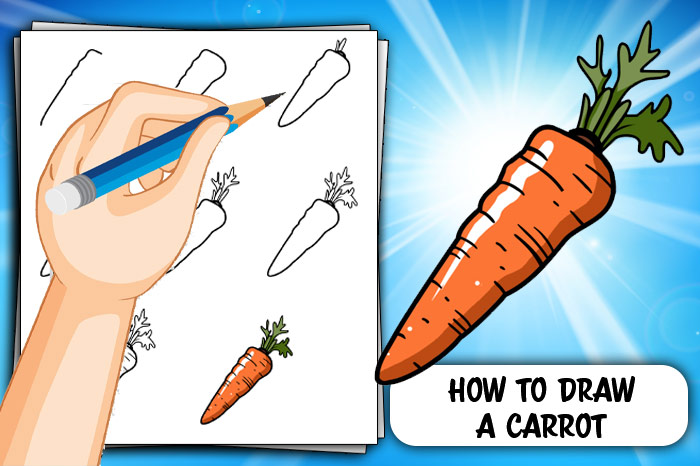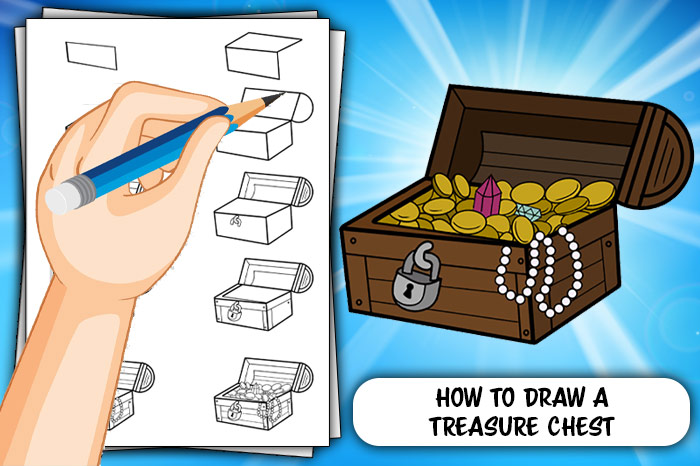Learning the importance of recognising shapes and colours is a key skill in children. It is globally considered a basic skill that can be taught at an early age through daily objects in your life e.g pizza is a circle. Our shape tracing worksheets and activities will help your child learn.
Learning shapes for children is about identification, quantification, differentiation and comparison of the basic forms. Kids use shapes from a very early age even when they are unaware of the concept and have just started to form. For example, a four-year-old child will draw out the shape of food they like. Young children instinctively use their inherent knowledge to grasp and enhance their learning.
Solidifying their understanding of different characteristics of shapes takes a lot of practice. But it will help them know what a shape looks like. Or how many sides a shape has. Your children will be able to notice the difference between a red apple from a yellow banana. JustFamilyFun’s shapes worksheets are here to help your children to learn and practice fundamental shape problems in a fun and interactive way. This book is downloadable and printable.
Details of the Shape Learning Activities & Shape Tracing Worksheets
The book has vivid colours and 15 pages of great shape activities. This book has everything you need to learn basic shapes, from matching the shapes to objects to identifying the basic shapes in everyday forms to keep your young ones enjoying learning.
Pages 1 -5: Identifying each shape
The fun begins with the very first activity in the workbook by learning about each shape. Your child will learn about what a rectangle, circle, triangle, square and oval looks like through animation. They will learn how many sides each shape has and if they have any corners.

They will then look at all the objects at the bottom of each page and drawing their own shape instructed identify all the objects that match the shape they learned about.
Page 6: Match the Shapes
The next activity in the book is ‘Match the Shapes’. This activity is perfect for young ones learning their shapes and how to recognise and learn the basic shapes and match them with the correct written name. This way, the children learn basic shapes as well as their spelling.

Page 7: Name the Shape
The third activity in the fun and free downloadable workbook is ‘Name the Shape’. This activity encourages your children to remember the written word for each shape they learned earlier on the workbook and recognise the correct spelling for it. Each shape on this page has their word all jumbled up. It is time to unjumble the letters and put the correct name for the shape in the box.
Remember to take your time with this one. If you have younger children it may be best to write the word in the box and let your child trace them so they can practice their own handwriting at the same time.

Page 8: Let’s make a Pizza
Let’s make a Pizza is a fun activity if you like colouring. This activity allows your child to express their creative side through colours. This activity asks you to colour the toppings on the pizza based on the prescribed colour. So not only are they getting confident with shapes but they can associate different colours to each form.

Pages 9 & 10: Let’s sort the Shapes
The next two pages are time for getting the tools out. Your child will need your help cutting the shapes out on page 10 so we advise for a adult to do that as scissors are required. Once all the objects are cut it is then to make a decision of which shape is 2D and which is 3D. This activity helps your child identify which shape is flat e.g 2D or which shapes is solid and has a depth and width e.g 3D. Once your child has made a decision glue each shape into the matching column.

Page 11: Let’s Learn Shapes
The sixth activity in the book is tracing shapes. This tracing activity helps the kid get more comfortable with the basic shapes and develop their fine motor skills. It helps them learn how each shape is drawn and gives them plenty of opportunity to get it right.

Pages 12 & 13: House of Shapes
Thanks to the previous activity your child is already warmed up with tracing. This activity combines the different shapes to make a bigger object like a house and a robot. It helps your child understand that everything in this world can be made up of different shapes to make one big shape. A house for example can be made up of circles and squares.

Pages 14: shape tracing worksheets
The penultimate activity can be kept as an example for your children. You can either fill it out so your child can practice on another sheet or once your child is confident and comfortable naming each shape and understanding what each form looks like they can trace out the shape using a bunch of colourful pens. In the future, they can use this as a reference point when they are free drawing or learning it in class.

Page 15: Trace and Draw
The last activity is called Trace and Draw. After doing all the activities this one should show how comfortable your child is with shapes. This encourages them to take a brave step and draw their own version of each shape without the guidance of a tracing. This allows them to make their own choices and show everyone how far they have come. Once they have free drawn their own shapes they can colour them in!

Did you love our Shape tracing worksheets in our book?
If you like the activities in the book and believe this book will help your kids will have fun whilst learning basic shape skills. Download our ‘Learning Shapes’ worksheets now. Or if you think that your child could benefit from our skills why not check out our ‘My Math Book’ to learn basic mathematics skills.
Stay safe,
Gavin



